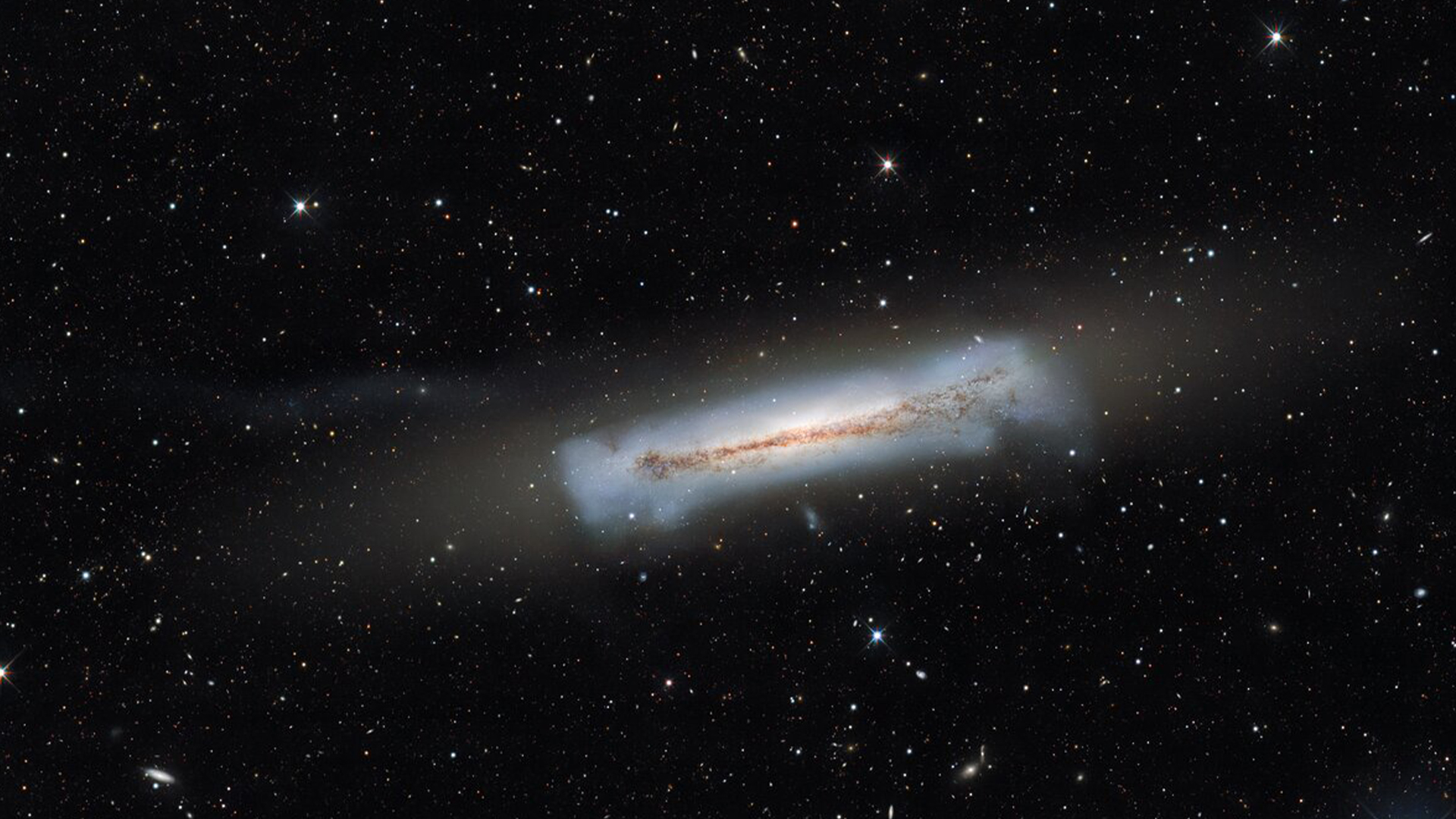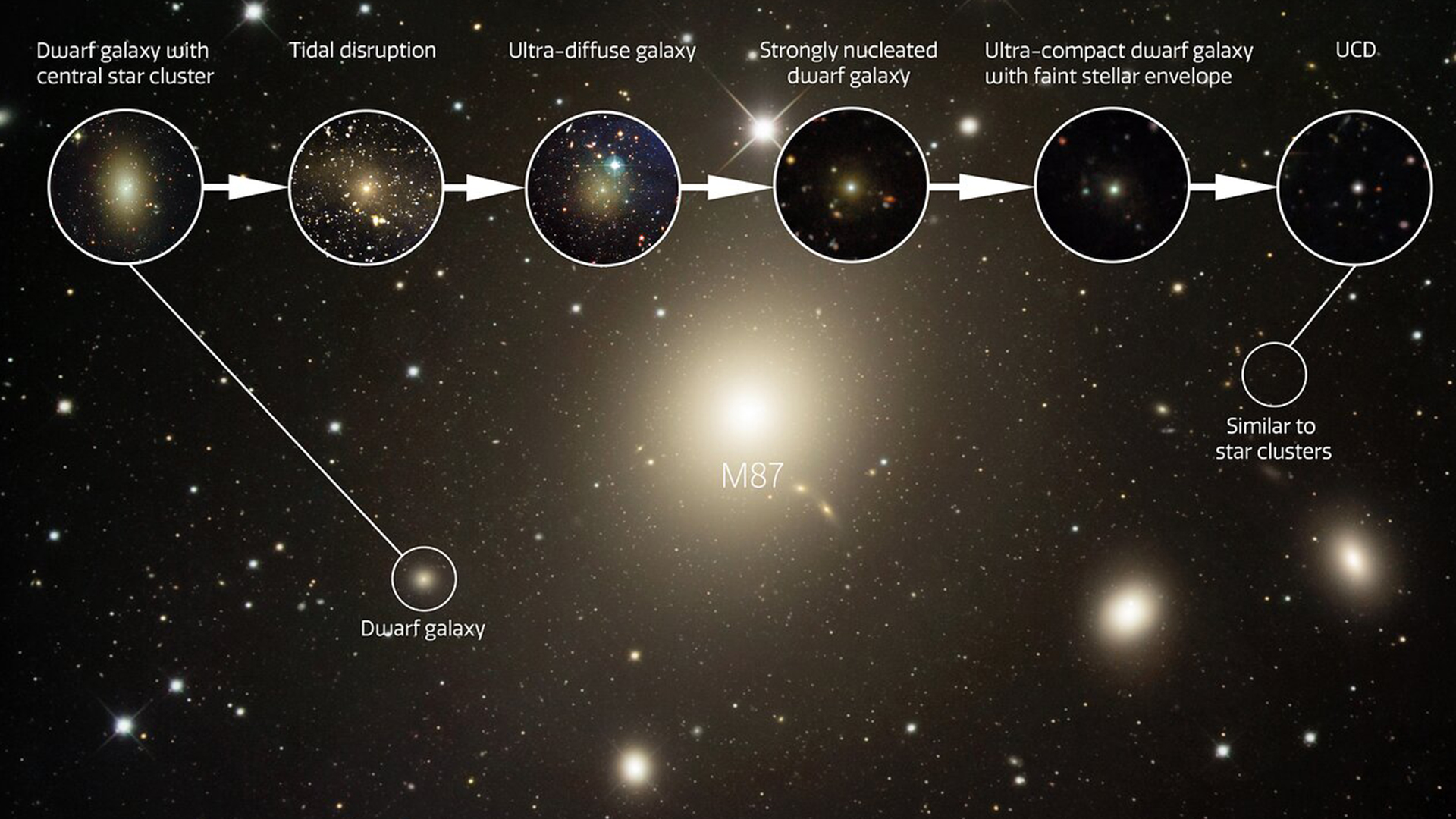
Astronomers have spotted the eroding remains of 100 dwarf galaxies that have been violently stripped of their outer layer of stars by larger galaxies. These disrupted galaxies represent the "missing link" in the evolution of a puzzling type of galaxy called ultra-compact dwarf galaxies (UCDs).
The discovery shows that UCDs — which are among the densest collections of stars in the universe — are the fossilized remains of normal dwarf galaxies that have been destroyed in violent gravitational encounters with other galaxies.
Astronomers first discovered UCDs more than two decades ago. The ultra-dense galaxies posed a mystery for astronomers because they are smaller and more compact than ordinary dwarf galaxies but larger than the star clusters they most closely resemble. Scientists theorized that UCDs were the remains of destroyed dwarf galaxies, but they lacked an intermediate galaxy to help confirm the transition.
So astronomers at the Gemini North telescope atop Mauna Kea in Hawai'i began searching for these cosmic missing links around the Virgo Cluster — a group of around 2,000 galaxies located around 65 million light-years from Earth. The telescope spotted dozens of dwarf galaxies that seem to be undergoing this transformation.
"Our results provide the most complete picture of the origin of this mysterious class of galaxy that was discovered nearly 25 years ago," Eric Peng, a NOIRLab astronomer at the Kavli Institute for Astronomy and Astrophysics at Peking University, said in a statement. "Here we show that 106 small galaxies in the Virgo cluster have sizes between normal dwarf galaxies and UCDs, revealing a continuum that fills the 'size gap' between star clusters and galaxies."
Related: Astronomers just caught the tiniest cannibal galaxy in the universe
Peng is a co-author of a paper detailing the discovery of these missing link galaxies published Wednesday, Nov. 8, in the journal Nature.
The recently identified galaxies seem to be in the early stages of UCD formation. All are located close to massive galaxies. This suggests that the gravitational influence of the nearby massive galaxies has stripped these smaller cosmic objects of their stars and gas.
The astronomers also saw objects within the Virgo Cluster with stretched and diffuse envelopes of gas and stars, as if they are currently being dragged away. Other objects seem to show different phases of this UCDtransition.

"Once we analyzed the Gemini observations and eliminated all the background contamination, we could see that these transition galaxies existed almost exclusively near the largest galaxies," lead author Laixiang Wang, a scientist at Peking University, said in the statement. "We immediately knew that environmental transformation had to be important."
When arranged into a time sequence, the team got a picture of what appears to be the story of these star-robbed galaxies. "It's exciting that we can finally see this transformation in action," Peng concluded."It tells us that many of these UCDs are visible fossil remnants of ancient dwarf galaxies in galaxy clusters, and our results suggest that there are likely many more low-mass remnants to be found."







